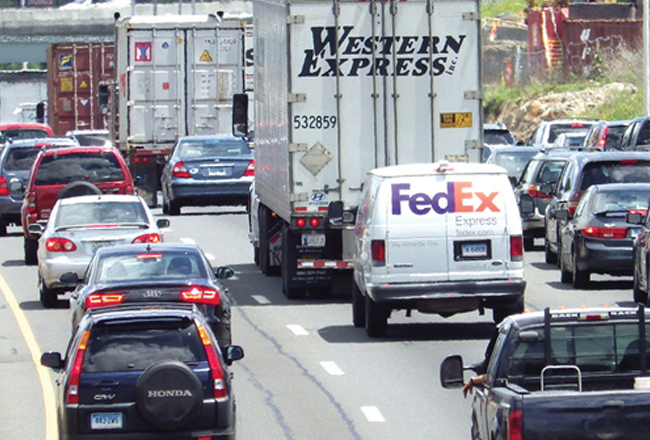Gov. Malloy sounds alarm on dwindling Special Transportation Fund
Gov. Dannel Malloy increased his warnings on the status of the state”™s Special Transportation Fund following the release of a new report showing that the solvency of the fund is in growing jeopardy.
 The report lays out numerous state transportation projects in towns and cities across Connecticut that would be at risk of cancellation or deferral if the state does not take corrective action to support the Special Transportation Fund.
The report lays out numerous state transportation projects in towns and cities across Connecticut that would be at risk of cancellation or deferral if the state does not take corrective action to support the Special Transportation Fund.
The report, which comes from the Office of Policy and Management and the Connecticut Department of Transportation, states that the primary sources of revenue for the state”™s transportation system are not enough to keep it sustainable over the long-term, and maintains that corrective action must be taken soon or the fund will be depleted, necessitating the delay or deferral of many planned projects.
“For too long, Connecticut put off the tough choices necessary for making critical investments in our state”™s transportation system and growing our economy ”“ and now the bill is coming due,” Malloy said. “Today we are at a crossroads, and a decision must be made: Will we cancel important projects and let our roads and bridges deteriorate or will we endeavor to face these problems head on and find new ways to support our transportation system?
“My position remains clear: Transportation is critical to our economic success,” he continued, “and simply cutting our way out of this would be catastrophic to our state. As we prepare to enter a new year, I will encourage and facilitate continued dialogue with my fellow leaders in state government to ensure that action is taken, and taken soon.”
The Special Transportation Fund was created through legislation adopted by the Connecticut General Assembly in 1984 in order to provide a dedicated fund for the financing of investment in the state”™s transportation system and to cover the cost of operating the Department of Transportation and all the services it provides. Its primary sources of revenue come from the motor fuels tax; motor vehicle tax receipts; license, permit, and fees; federal grants; interest income; oil company taxes; vehicle sales taxes; and general fund transfers.
Over the years, Malloy said, a number of factors contributed to the current strain of the fund, including:
- The reduction of the gas tax in 1997, which resulted in a cumulative $4 billion loss, followed in 2012 by the General Assembly setting an upper limit on the gas tax levied on oil companies.
- The price of oil fell at a much faster rate than had been anticipated in 2015, at the same time that total vehicle miles declined and the market began switching to electric cars.
- The amount of annual debt service is increasing markedly as repayment obligations on previously issued bonds are due. Those bonds were sold during a period of transportation infrastructure rebuilding over the last two decades.
- In the 2016-17 biennial budget, $37.5 million was diverted out of the fund, resulting in increased bus and rail fares, reduced highway maintenance, and a cut in Department of Transportation personnel positions. That action also resulted in a reduction in the cumulative balance in the fund.
Should the status quo remain in place, Malloy said, the DOT will be forced to significantly reduce its operating budget and capital program, causing a significant reduction in highway, rail, and bus service to the public.